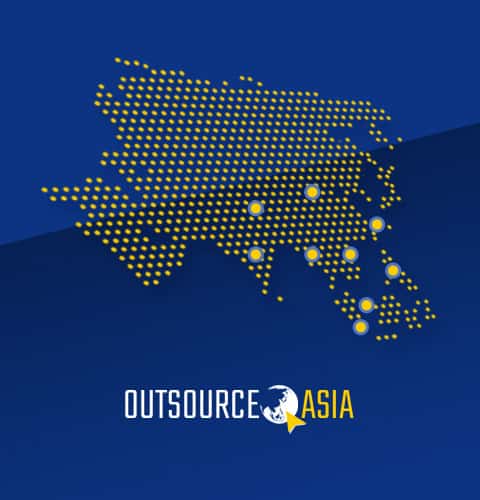Outsourcing. It’s a word that conjures images of cost savings, expanded capabilities, and tapping into global talent pools. For many businesses, it’s no longer a question of if they should outsource certain functions, but how to do it successfully. Yet, beneath the surface of potential benefits lurks a common challenge, one tied to Cultural Intelligence on Outsourcing—a factor that often goes unaddressed until deadlines are missed, communication breaks down, and frustration mounts on both sides.
What’s this hidden hurdle? It’s the complex, often subtle, tapestry of cultural differences. And navigating it effectively requires more than just good intentions; it demands Cultural Intelligence (CQ).
Think about it. You’ve meticulously chosen an outsourcing partner based on technical skills, price point, and maybe even timezone alignment. You’ve set up project management tools and communication channels. But weeks or months in, things feel… off. Feedback seems to be misinterpreted. Urgency levels don’t match. Decisions take longer than expected. Often, the root cause isn’t incompetence or lack of effort – it’s a disconnect in cultural understanding.
In today’s interconnected global economy, where partnering with teams across continents is commonplace (Statista, 2023), cultural intelligence isn’t just a ‘soft skill’ or a ‘nice-to-have’. It’s a fundamental pillar for building successful, sustainable, and truly productive outsourcing relationships. Let’s dive into why CQ is moving from the periphery to the core of smart outsourcing strategy.
What Exactly is Cultural Intelligence (CQ)? It’s More Than Just Awareness
Cultural intelligence isn’t simply knowing that different cultures have different holidays or foods. It’s the capability to relate and work effectively across culturally diverse situations. It’s about adapting and connecting meaningfully. Think of it like Emotional Intelligence (EQ), but applied to cross-cultural contexts.
Scholars like P. Christopher Earley and Soon Ang break CQ down into four key components, which are incredibly relevant when applied to outsourcing:
- Drive (Motivation): This is your intrinsic interest and confidence in engaging with different cultures. In outsourcing, it means genuinely wanting to understand your partner team’s context, not just seeing them as a faceless service provider. It’s the curiosity to ask questions and the resilience to navigate misunderstandings without immediate frustration.
- Knowledge (Cognition): This involves understanding the basic frameworks of different cultures – their values, communication styles, social norms, and even economic or legal systems. For outsourcing, it means knowing, for example, how hierarchy might influence communication in your partner’s country, or typical working hours and attitudes towards deadlines.
- Strategy (Metacognition): This is your ability to plan for and make sense of cross-cultural experiences. It’s about consciously checking your assumptions before interacting, adjusting your communication style during conversations, and reflecting on interactions afterward to learn. When outsourcing, this means strategically thinking about how to deliver feedback or which communication channel is most appropriate for a specific message, given the cultural context.
- Action (Behavior): This is the pointy end – your ability to actually adapt your verbal and non-verbal behavior to suit different cultural settings. In an outsourcing relationship, this could mean adjusting your directness when giving feedback, understanding different uses of silence in virtual meetings, or modifying how you build rapport with the remote team.
Being merely aware of differences isn’t enough. True CQ involves actively using this awareness to bridge gaps and build stronger connections – especially vital when your team members are thousands of miles away.
Why is CQ Non-Negotiable in Your Outsourcing Strategy?
Ignoring cultural intelligence in outsourcing is like trying to assemble complex machinery with only half the instruction manual. You might eventually get there, but it will be far more painful, slow, and error-prone than it needs to be. Here’s why actively cultivating CQ is crucial:
- Beyond Language Barriers: Sure, English might be the common business language, but how it’s used varies dramatically. Direct vs. indirect communication styles, the importance of ‘saving face,’ differing levels of formality – these nuances can lead to significant misunderstandings if not navigated with CQ. What sounds like constructive criticism to one culture might feel like a harsh personal attack on another. CQ helps decode these subtleties.
- Building Trust Across Distances: Trust is the bedrock of any successful partnership, but it’s harder to build remotely. Cultural misunderstandings erode trust quickly. When you demonstrate cultural intelligence – showing respect for their ways of working, making an effort to understand their perspective – you build psychological safety and strengthen the relationship foundation.
- Smoother Collaboration and Workflow: Different cultures have different approaches to teamwork, deadlines, hierarchy, and problem-solving. One team might expect detailed instructions, while another thrives on autonomy. One might see a deadline as a fixed point, another as a guideline. CQ allows you to anticipate these differences, set clearer expectations upfront, and adapt processes for smoother collaboration, reducing friction and delays.
- Unlocking True Innovation: Outsourcing often brings diverse perspectives, which should be a catalyst for innovation. However, if cultural differences lead to communication barriers or make team members hesitant to speak up, this potential is lost. Culturally intelligent teams create an environment where diverse ideas can be shared, challenged constructively, and integrated effectively.
- Improving Project Outcomes and ROI: Misunderstandings cost time and money. Rework due to misaligned expectations, delays caused by communication breakdowns, and lower quality stemming from unresolved cultural friction all impact on the bottom line. Investing in CQ leads to fewer errors, faster alignment, and ultimately, better project outcomes and a higher return on your outsourcing investment.
- Elevating the Relationship from Vendor to Partner: Low-CQ interactions tend to be purely transactional. High-CQ interactions build rapport, foster mutual respect, and transform the relationship from a simple vendor-client dynamic into a genuine strategic partnership. This leads to greater commitment, proactivity, and long-term value from your outsourced team.
Think About These Scenarios:
- You send an email with direct, bullet-pointed feedback to your outsourced development team in a high-context culture (where meaning is often implied). The team becomes quiet and less responsive, interpreting your directness as overly harsh or disrespectful. CQ Strategy & Action needed.
- Your marketing team in a culture that values consensus takes longer to make decisions than your fast-paced, individualistic home office expects, leading to frustration about perceived slowness. CQ Knowledge & Strategy needed.
- You rely heavily on email for urgent updates, but your outsourced customer support team in another country prefers quick calls or chat messages for immediate issues, leading to missed critical information. CQ Knowledge & Action needed.
These aren’t failures of skill; they are often failures of cultural intelligence.
How to Weave Cultural Intelligence into Your Outsourcing Practice
Developing CQ isn’t an overnight process but embedding it into your outsourcing approach is achievable and highly beneficial. Here’s how:
- Start with Self-Assessment: Understand your own cultural biases and communication style. How might your approach be perceived by others? Encourage your internal team to do the same. Awareness is the first step.
- Invest in Cross-Cultural Training: Provide targeted training not just for your in-house team interacting with the partner, but ideally, offer resources or joint sessions with your outsourcing partner. Focus on practical communication strategies, understanding work-style differences, and building empathy.
- Explicitly Define Communication Protocols: Don’t leave communication norms to chance. Clearly outline expectations for meeting frequency, preferred channels for different types of communication (urgent vs. non-urgent), feedback delivery, and decision-making processes. Co-create these protocols with your partner.
- Prioritize Relationship Building: Dedicate time for non-task-related interactions. Virtual coffee breaks, introductions beyond job titles, showing genuine interest in their local context – these efforts build rapport and trust, making difficult conversations easier later.
- Select Partners with CQ in Mind: During the vendor selection process, ask potential partners about their experience working across cultures. How do they onboard clients from different backgrounds? Do they provide any cross-cultural training to their own staff? Look for partners who value and demonstrate CQ themselves.
- Establish Safe Feedback Loops: Create channels where both teams can openly (and safely) discuss working styles and address cultural friction without fear of blame. Regular retrospectives that include reflecting on cross-cultural interactions can be invaluable.
- Lead with Curiosity and Empathy: When misunderstandings occur (and they will), approach them with curiosity rather than judgment. Ask clarifying questions like, “Can you help me understand your perspective on this?” Assume positive intent until proven otherwise.
The Future of Outsourcing is Culturally Intelligent
As the world becomes increasingly interconnected, the old model of outsourcing purely for cost arbitrage is evolving. The real value lies in building effective, integrated global teams that drive innovation and efficiency. Cultural intelligence is the key that unlocks this potential.
Ignoring CQ in your outsourcing relationships is no longer a viable option. It leads to inefficiency, frustration, and ultimately, undermines the very benefits you sought from outsourcing in the first place. By proactively cultivating cultural intelligence – within your team and in your partnership approach – you move beyond simply managing differences to leveraging them as a strategic advantage. It’s an investment that pays dividends in stronger partnerships, smoother workflows, and significantly better results. Make CQ a conscious part of your outsourcing strategy, and watch your global collaborations thrive.
Ready to leverage Asia’s outsourcing potential?
Contact Outsource Asia today to discover how we can help your business thrive with customized, AI-driven outsourcing solutions.


